Rice University
Latest
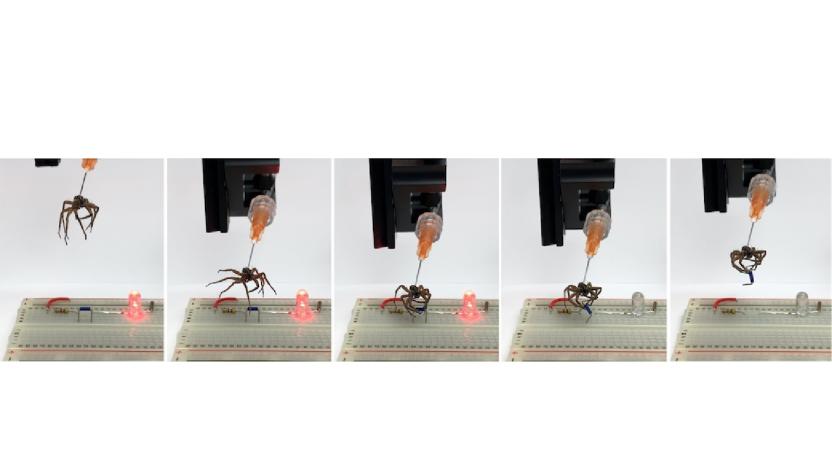
Researchers turned dead spiders into literal claw machines
No, it wasn’t necromancy.
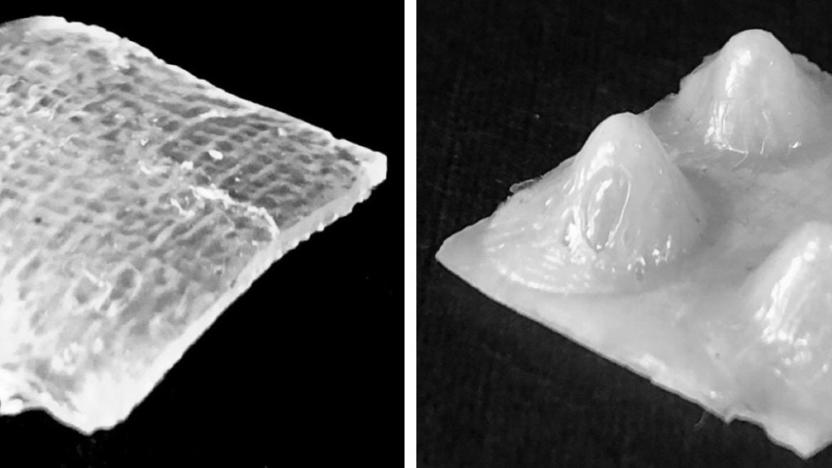
New 3D printing technique could make shapeshifting robots more practical
Scientists have developed a 3D printing method that could make shape-changing soft robots more practical.
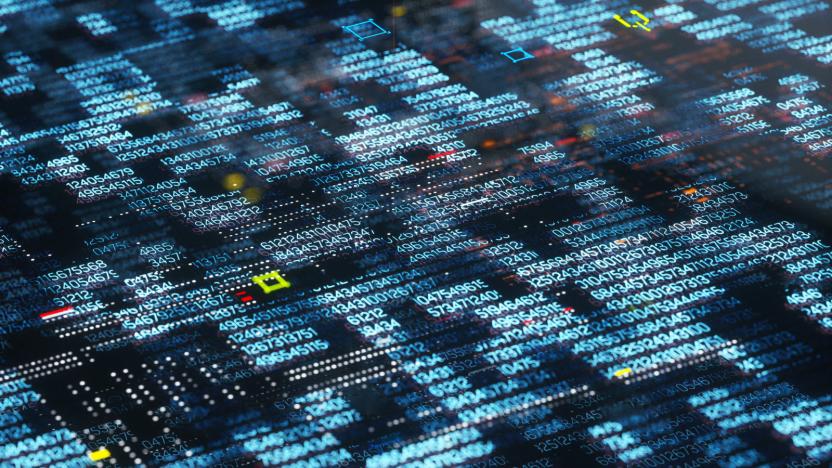
An algorithm could make CPUs a cheap way to train AI
AI is the backbone of technologies such as Alexa and Siri -- digital assistants that rely on deep machine learning to do their thing. But for the makers of these products -- and others that rely on AI -- getting them "trained" is an expensive and often time-consuming process. Now, scientists from Rice University have found a way to train deep neural nets more quickly, and more affordably, through CPUs.
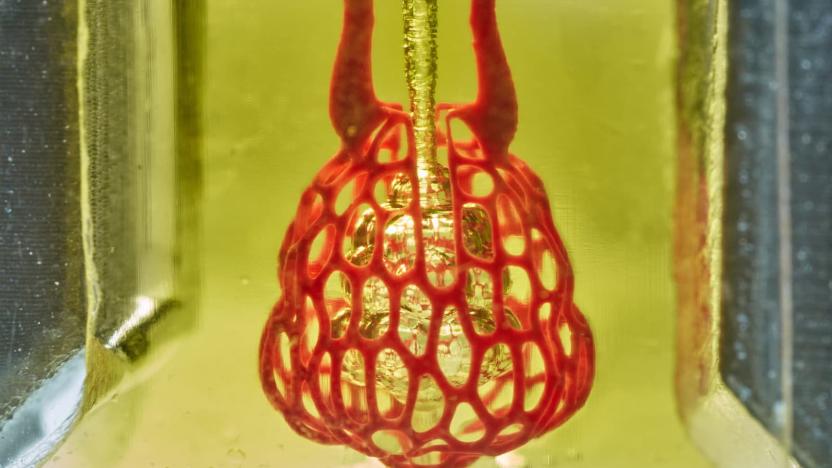
Bioengineers 3D print complex vascular networks
Bioengineers are one step closer to 3D printing organs and tissues. A team led by Rice University and the University of Washington have developed a tool to 3D print complex and "exquisitely entangled" vascular networks. These mimic the body's natural passageways for blood, air, lymph and other fluids, and they will be essential for artificial organs.
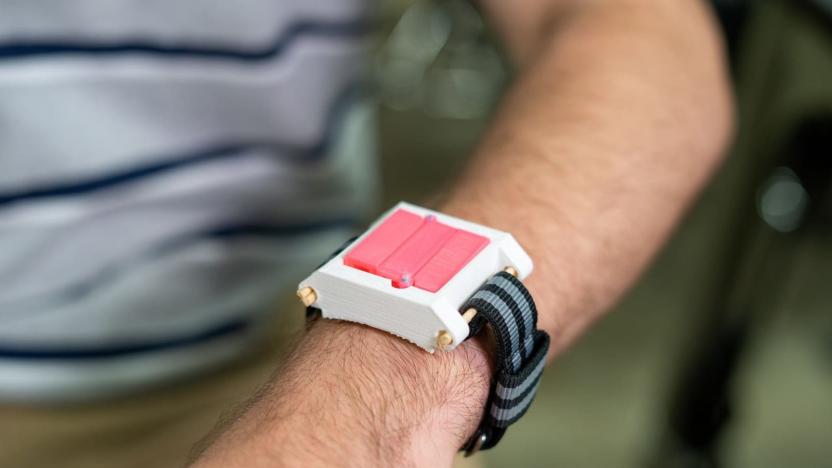
Syringe 'watch' puts a life-saving allergy shot on your wrist
If you're prone to serious allergic reactions, carrying an epinephrine shot (such as an EpiPen) could be vital. Those shots are often bulky, though, and there's a real chance you could lose yours right before you need it. Students at Rice University have a (relatively) simple solution: put the shot on your wrist. They've developed a wearable, the EpiWear, that hides a foldable epinephrine syringe in a device not much larger than a watch. If you're in an emergency, you just need to unfold it, flick a safety lever and push a button when you're ready to inject the medicine into your thigh.
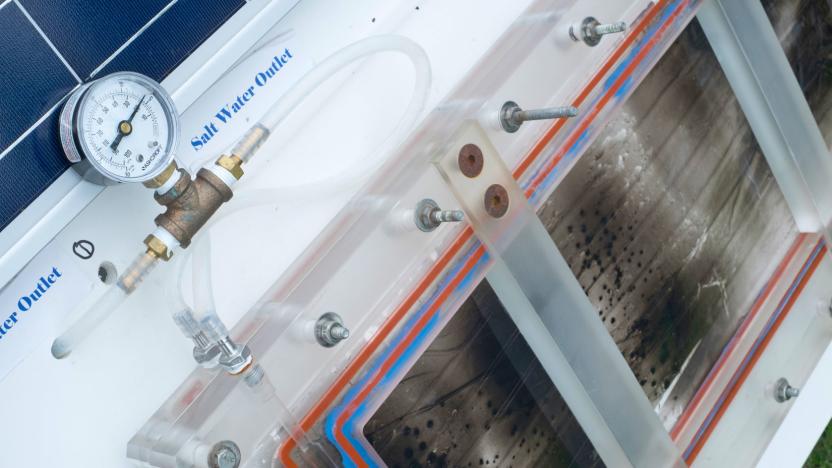
Researchers can now desalinate seawater with the power of the Sun
One of the oldest means of extracting potable liquid from seawater involves distillation, basically boiling the water into steam and then cooling the purified vapor in condensation tubes. Problem is, this method is incredibly power intensive with nearly half of the input energy going towards just boiling the water. But, a team of researchers from Rice University have developed a new technique that not only drastically reduces the amount of energy needed but can decouple the process from the power grid altogether.
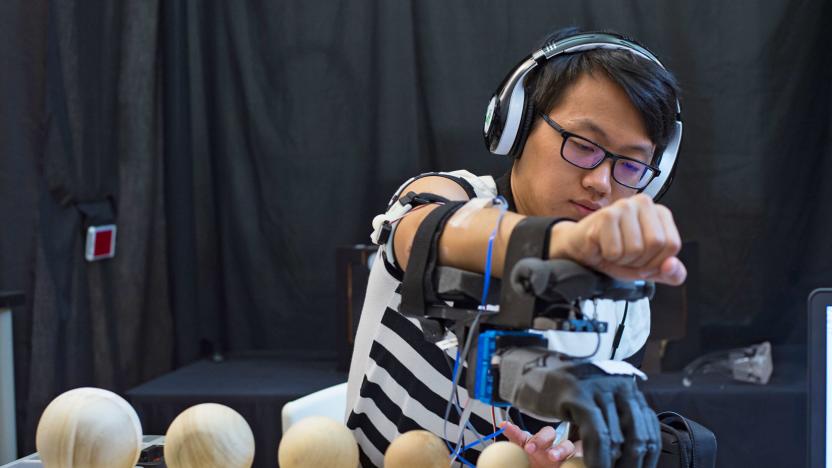
Haptic feedback gives prosthetics 'muscle sense'
For all the actuators, artificial tendons and glitter cannons that researchers are packing into modern prosthetics, these devices still lack an noninvasive means of transmitting haptic feedback to its user. However a device developed by Rice University in partnership with the University of Pisa and the Italian Institute of Technology aims to do just that.

A Robot Swarm descends on NYC's Museum of Math
Roboticist-in-residence James McLurkin offered an advanced preview of his Robot Swarm at NYC's Museum of Mathematics this week. The presentation detailed the background and programming concepts of these sensor- and speaker-laden bots -- which have a habit of spitting out 8-bit-style tunes while they work. The digital creatures exhibit group behaviors much like ants and bees, working together to map out their surroundings and communicate with each other -- and there's a definite hierarchy to their organization. The Robot Swarm exhibit will be open to the public when it's completed later this year and will be displayed beneath a transparent floor so you can watch the action happen from your own god-like perspective. Head on down to the gallery for a closer look at how the Robot Swarm will organize itself when the robopocalypse finally arrives.

Researchers stumble onto 'lava' generated quantum dots, could power future peripherals
Have you ever been playing around with molten metal salt, when you accidentally created hollow, soft-shelled particles that could one day increase hard disk storage or power future QLED displays? Us neither, but that's exactly what happened to scientists at Rice University when they were researching "tetrapods" to make solar panels more efficient. Through an apparently wacky coincidence, they removed a single ingredient from the tetrapod stew, which left behind tiny droplets of cadmium nitrate. Selenium then melted around those drops, which completely dissolved away, leaving a melted selenium ball with a hole in the middle. It turns out that those selenium "doughnuts" can be packed tightly onto a metal surface without touching, thanks to their soft shells, which could allow more bits to be packed onto a hard drive, or be used in quantum computers and next-gen displays. Since the dots are smaller than a living cell, it took the researchers an entire year to figure out what they'd made and how they did it -- luckily they didn't just bin the whole thing and start over.

Rice University offers course on Old Norse mythology, Skyrim
Look, you don't need an expensive piece of paper from some institution to know that you're the Dohvakiin. You know it, we know it, the guy you yelled at until he died knows it -- that's all that really matters in the long run. But, if for some reason you did want to expand your knowledge of the ancient legends behind your ancient legend, Rice University has you covered."Scandinavian Fantasy Worlds: Old Norse Sagas and Skyrim" is a new course at Rice University in Houston, TX, which "introduces students to fantasy as both psychological concept and driving force in gamer culture" by having students "read selections from Old Norse and Old Icelandic sagas (in translation) as they play different quests within Skyrim."As you can imagine, enrollment availability is limited to actual, bona fide students at Rice University. Additionally, the class is only available this semester, which is sad considering that beating Skyrim will most likely take longer than passing the course.

Inhabitat's Week in Green: energy-harvesting toilet, LED lightbulb overhaul and a floating, solar-powered resort home
Each week our friends at Inhabitat recap the week's most interesting green developments and clean tech news for us -- it's the Week in Green. LED technology shone brighter than the summer sun this week as artist Bruce Munro unveiled plans for his largest lighting installation ever -- a field of thousands of LED flowers that will spring up next year at Australia's Ayers Rock. Best of all, the entire installation will be powered by solar energy! We also saw Rice University flip the switch on its new Epiphany Skyspace -- a green-roofed pavilion that's topped with a brilliant blue canopy of light. If you're still not convinced that LEDs are the future, we recently produced two videos that are sure to show you the light -- check out our interview with five professional lighting designers on today's state of the art LED bulbs and watch as we give Inhabitots editor Julie Seguss a light bulb overhaul that shaves over $400 off her utility bills. And if you're ready to make the switch, check out our guide to 24 gorgeous green lamps that look great with LED bulbs. This week saw some exciting new developments in the realm of renewable energy. First, a group of scientists in the UK developed a new energy-harvesting device that attaches to the joint between the thigh and shin. The device could be used to power monitors and mobile devices, to name a few possible applications. Meanwhile, scientists from Nanyang Technological University in Singapore have invented a new toilet that turns human waste into electricity while reducing the amount of water needed for flushing by up to 90 percent. That's what we call, win-win!

Rice University researchers create spray-on battery, powered bathroom tiles
Liquid solar cells are pretty neat, to be sure, but current-generating paint can be a hard color to match. Good thing, then, that researchers at Rice university have developed the perfect complement: a spray-on battery. By carefully layering five coats of specially formulated paint, the team has found a way to apply a thin coat of lithium ion storage to multiple surfaces, including glass, ceramics, steel and flexible polymers. Early experiments are promising -- after applying the process to nine ordinary bathroom tiles, the painted batteries were able to power a small array of LEDs (spelling "Rice") for six hours, consistently pumping out 2.4 volts of electricity. After 60 charge / discharge cycles, researches say the batteries retained most of their capacity. Neelam Singh, Rice graduate student and lead author of the team's report, says the technology will only improve when coupled with modern methods. "Spray painting is already an industrial process, so it will be very easy to incorporate this into industry," she said. "We really do consider this a paradigm changer." Scope out the processes (and its fruits) for yourself after the break.

Researchers tout efficiency breakthrough with new 'inexact' chip
Accuracy is generally an important consideration in computer chips, but a team of researchers led by Rice University are touting a new "inexact" chip (dubbed PCMOS) that they say could lead to as much as a fifteen-fold increase in efficiency. Their latest work, which won a best paper award at a recent ACM conference, builds on years of research in the field from the university, and is already moving far beyond the lab -- some inexact hardware is being used in the "i-slate" educational tablet developed by the Rice-NTU Institute for Sustainable and Applied Infodynamics, 50,000 of which are expected to wind up in India's Mahabubnagar school district over the next three years. As for the chips themselves, their inexactness comes not just from one process, but a variety of different measures that can be used on their own or together -- including something the researchers describe as "pruning," which eliminate rarely used portions of the chip. All of that naturally comes with some trade-offs (less defined video processing is one example given), but the researchers say those are often outweighed by the benefits -- like cheaper, faster chips that require far less power.

Ditching DRM could reduce piracy, prices, inconvenience
This may run counter to what your common sense tells you but, a new paper out of Duke and Rice University says that ditching DRM could actually reduce piracy. The study, which relied on analytical modeling, showed that while copy protection made illegally sharing content more difficult it had a significantly negative impact on legal users. In fact, the researchers say, "only the legal users pay the price and suffer from the restrictions [of DRM]." Many consumers simply choose to pirate music and movies because doing simple things, like backing up a media collection, is difficult with DRMed content. Even the most effective DRM is eventually broken, and fails to deter those already determined to steal. Meanwhile, abandoning these restrictions could increase competition and drive down prices (as well as remove a serious inconvenience), encouraging more people to legitimately purchase content. You can check out the November-December issue of Marketing Science for more details.

Researchers demo full-duplex wireless: double the throughput with no new towers
Back in February researchers at Stanford first taunted us with the possibility of simultaneous, two-way data transmission on the same frequency. Now some folks at Rice University are edging full-duplex communication closer to reality. By the time carriers get around to rolling out 4.5G networks, engineers could potentially double throughput without adding more cell towers and using only existing mobile hardware. With an extra antenna and some fancy software tricks, which allow the device to ignore locally produced signals, the Rice team was able to produce a connection ten-times stronger than previously published studies. Since the technology is based on existing MIMO setups, it may also prove the shortest route to asynchronous full-duplex transmissions. That means you'll be able to upload ill advised videos of your drunken antics (and suffer the consequences) that much faster, without having to pause the latest Maru clip. Check out the PR after the break. [Image credit: Jeff Fitlow/Rice University]

Rice University chemists bake graphene out of Girl Scout cookies, redefine low-carb diets (video)
Would you like some cookies? Well, you're gonna have to buy them, and then get thee to a Rice University chem lab, stat! The Texas institution of higher learning recently played host to Girl Scouts Troop Beverly Hills 25080, turning their om nom carbohydrated delights into billion dollar graphene. Resident scientist James Tour gathered his gaggle of grad students for a hands-on demo, walking the future Phyllis Neflers through the transformative steps that convert carbon-based material (see: a box of Samoas), into $15 billion worth of scientific loot -- or as one astute troopster put it, "... a lot of cash." Indeed it is young lady, but something tells us your well-earned Science in Action badge won't go too well with those cookie-bought Louboutins. Skip past the break for the full video and a little "Cookie Time" nostalgia.

Nanowire batteries now as 'small as possible,' could one day be included with nano toys
That black dot isn't a battery, it's an ultra-thin disc containing thousands of individual nanowire batteries. Rice University scientists claim their miniscule wires are "as small as such devices can possibly get," because each one comes complete with its own anode, cathode and gel-like electrolyte coating. This contrasts with previous examples we've seen, which bolted nanowires onto a chunky exterior cathode. On the other hand, these new all-in-one nano-batts only last for 20 charge cycles, so personally we're still betting on gooey Cambridge crude to be the next big thing in electricity. Full PR after the break.

Houston grandmother becomes host of first 'super WiFi' hotspot, proves you're never too old for wireless
This ain't your grandma's WiFi -- that is, unless your grandma is 48 year-old Leticia Aguirre. The Houston woman became the host of the very first "super WiFi" hotspot, earlier this week -- the new network takes advantage of unused UHF TV channels to bring internet service to underserved communities. In collaboration with researchers at Rice University, a Houston-based non-profit fittingly referred to as Technology for All (TFA), facilitated the setup and is in the process of deploying more whitespace hotspots across the area. The FCC approved use of whitespace for the new "super WiFi" back in September of last year. Full PR after the break.

Students use Wii Balance Board for kids' physical therapy system (video)
Nintendo's kid-tested, researcher-approved Wii Balance Board has struck at the heart of the medical supply industry yet again -- this time, the Bluetooth-connected scale is being used to help physically challenged children at Shriners Hospital in Houston. Seniors at Rice University hand-machined a set of force-sensitive parallel bars and programmed a monster-shooting game called Equilibrium to get kids excited about improving their walking gait, where they can play and score points with each proper step they take. The game automatically ratchets up the difficulty as patients improve, and handrails will play a part too, with a custom three-axis sensor box able to detect how much patients rely on the parallel bars (and dock points accordingly) in an effort to improve their posture. Yep, that sounds just a wee bit more useful than the Balance Board lie detector or the Wii Fit Roomba. Video after the break.

Silicon oxide forms solid state memory pathways just five nanometers wide
Silicon oxide has long played the sidekick, insulating electronics from damage, but scientists at Rice University have just discovered the dielectric material itself could become a fantastic form of storage. Replacing the 10-nanometer-thick strips of graphite used in previous experiments with a layer of SiOx, graduate student Jun Yao discovered the latter material worked just as well, creating 5nm silicon nanowires that can be easily joined or broken (to form the bits and bytes of computer storage) when a voltage is temporarily applied. Considering that conventional computer memory pathways are still struggling to get to 20nm wide, this could make for quite the advance in storage, though we'll admit we've heard tell of one prototype 8nm NAND flash chip that uses nanowires already. Perhaps it's time for silicon oxide to have a turn in the limelight.













